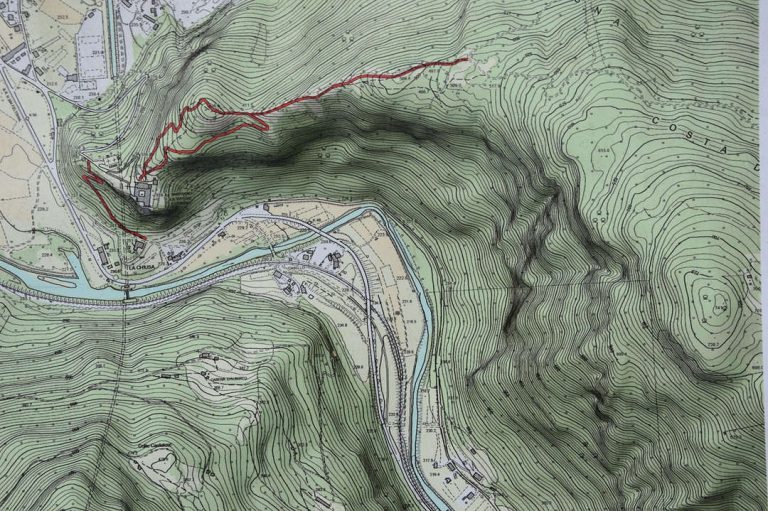Top Police Drones | Best Drones for Law Enforcement
Police drones are proving to be an essential tool for law enforcement agencies, enabling them to respond to emergencies safely, quickly, and efficiently.
The use of drones by law enforcement agencies has grown exponentially in the past few years.
According to the latest statistics from Atlas of Surveillance, a project of the EFF and the University of Nevada, at least 1,172 police departments across the country are using drones.
This is due in part to advances in drone technology and in part to the fact that drones are becoming more affordable and accessible.
This article highlights the advantages of utilizing drones in law enforcement, their applications, and top police drone options.
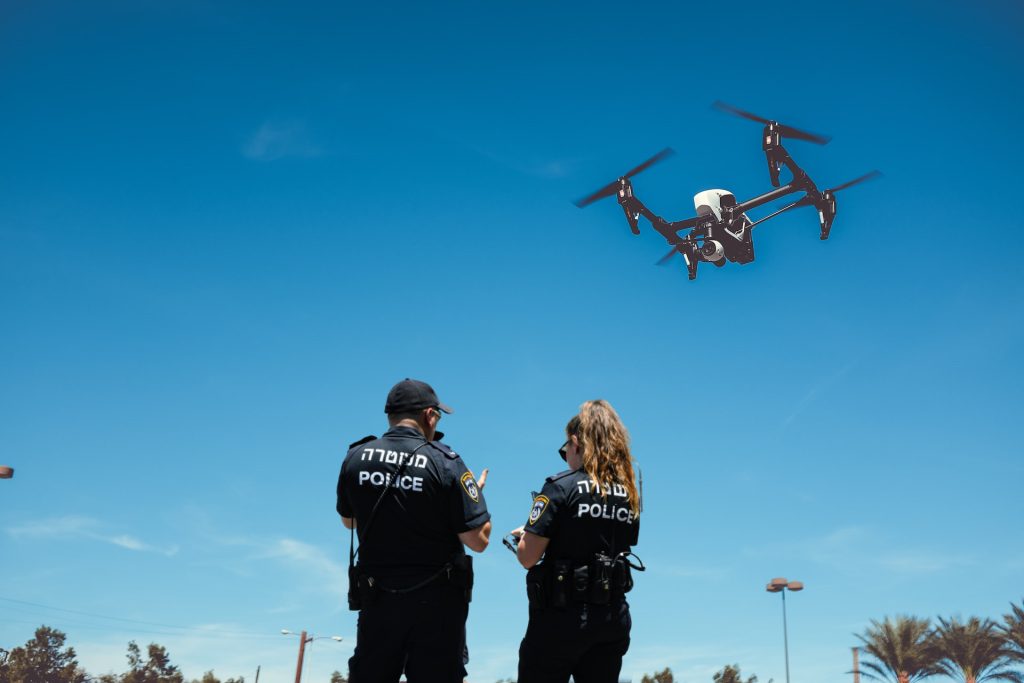
Benefits of Drones in Law Enforcement
Drones are being used by law enforcement around the world in many emergencies and tactical operations due to the following advantages:
Rapid Deployment
Drones are small and compact, and these design features allow them to be deployed quickly. Law enforcement officers can have them in the air in minutes and allow them to monitor and capture video and images of the incident in question.
Working Day and Night
The police drones are equipped with high-definition cameras with powerful zoom capabilities, combined with thermal cameras that allow them to observe at night as if they were in daylight.
Cost-Effective
A conventional manned helicopter and fixed-wing drone require specialized ground crews, multiple shifts of pilots and co-pilots, and runways or helipads, which means they are expensive to acquire, equip, and maintain. By contrast, a drone doesn't even require paying staff to control and monitor it, nor does it require high maintenance costs.
Reduced Risk
Drones can enter a dangerous environment and provide decision-makers with a real-time view of what is happening. The appropriate team members are then dispatched afterward, helping you and your officers avoid dangerous situations.
Improving Efficiency
Police drones can cover a large area in a short amount of time, which delivers important and useful information faster than multiple officers on the ground. This allows for helping first responders to respond to emergencies and respond to other incidents more effectively.
How are Police Using Drones?
What are police drone facts?
In 2020, according to a report by the Minnesota Bureau of Criminal Apprehension in 2021, law enforcement agencies in Minnesota used drones extensively.
They deployed drones 1,171 times, with 352 drones used after emergencies and 27 in response to disasters. This cost nearly $1 million.
The report reveals that:
- 64% of the drones were used for officer training.
- 23% were used to support criminal investigations.
- 5% were used for non-law enforcement government requests.
- 5% were used for investigating road collisions.
- 2% were used for public incident preparation and monitoring.
So, what are the specific applications of police drones? Below, we will introduce in detail:
Search and Rescue Operations
The use of drones in search and rescue operations is particularly notable.
A thermal drone, attached to an infrared camera, is commonly used by police to search for missing persons and animals.
Drones can quickly acquire aerial data over large areas, which allows rescuers to map the entire search area and pinpoint where missing people may be trapped.
Compared to ground vehicles, drones can get to a location faster and even reach inaccessible areas.
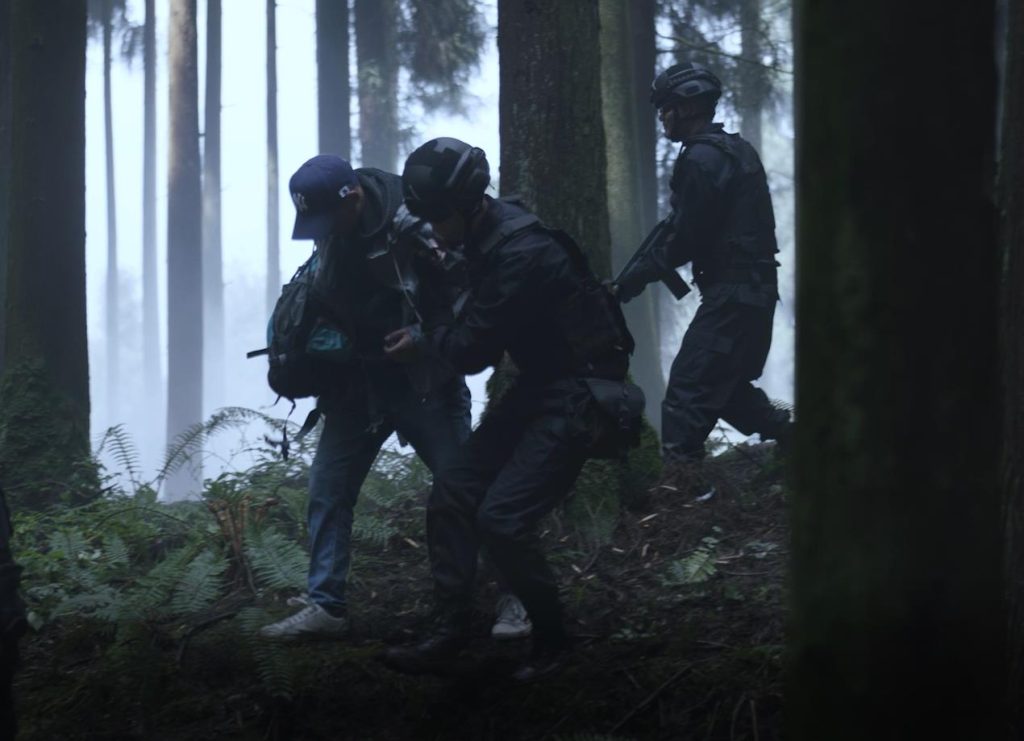
Traffic Accident Scene Investigations
Drones have become an important tool for crash scene investigation, which can capture aerial images and generate a 3D model of the crash scene.
This navigable drone 3D model allows the team to view and perform every angle of the scene, study vehicle damage up close, and gather important insights such as skid marks, and distances of each vehicle.
Police drones can also be used for traffic management in rush hour and congested areas.
It may be difficult for police officers on the ground to assess the causes and dynamics of traffic congestion, but a drone can easily solve this problem by flying overhead to determine the cause of traffic jams.
This information can then be relayed to traffic units so they can make the best decisions.
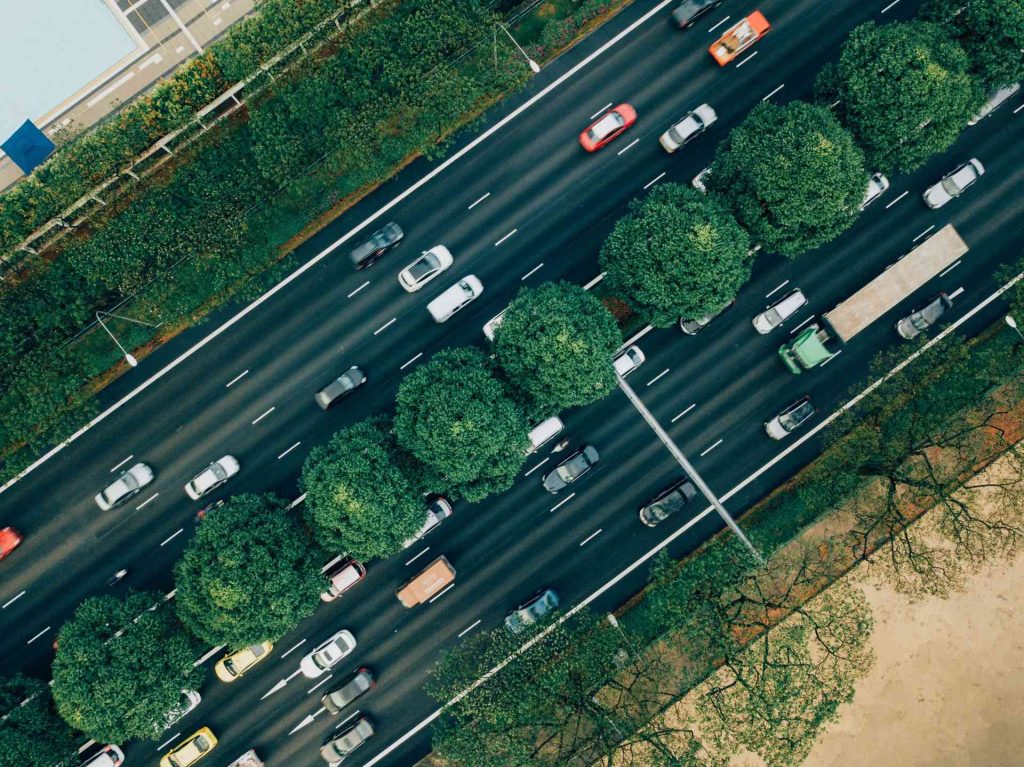
Crime Scene Analysis and Reconstruction
Drone technology replicates almost any scene, providing users with the ability to revisit the crime scene at any time.
Flying around crime scenes, drones can collect photos at different heights and angles, allowing for complete coverage of an area.
Compared to traditional human forensics, the speed with which drones can move from place to place and collect an uninterrupted stream of data is unparalleled.
On top of that, the drones create detailed 3D models and renderings.
These models enable investigators to measure things and analyze data, such as determining the impact force between objects or confirming the precise location of evidence items in the field.
Track and Locate Suspects
More and more police forces are taking advantage of it to safely and quickly arrest suspects.
In today's active time of shootings and terrorist attacks, more and more police forces are using drones to safely and quickly apprehend suspects.
Deploying drones to investigate these highly volatile and dangerous scenarios not only keeps officers safe but expands the aerial industry and allows law enforcement to collect more informational data in real-time.
Natural Disaster Response and Recovery Efforts
When a disaster strikes, a rapid and effective response is critical to assisting people, reducing the number of victims, and mitigating the economic impact.
Drones can search large areas in a short period, reducing the time required to locate victims and the time required for subsequent intervention.
In addition, drones can provide first responders with critical information about the routes that need to be taken during search and rescue operations.
Equipped with thermal imaging cameras, drones can be used to search for victims buried under the rubble.
Drones can also be used to transport emergency supplies (food, water, medicine, etc.) to provide help and relief.
Crowd Monitoring and Surveillance
In monitoring large gatherings and events, drone surveillance provides a broader view of crowd gatherings and transmits real-time data to crowd control teams.
Drones can zoom in on areas of interest and provide the team with detailed information about what is happening on the ground.
This information can help make critical decisions for the control team. In the event of an emergency, in-depth situational awareness helps the team respond effectively and promptly.
This improves the team's effectiveness in crowd management.
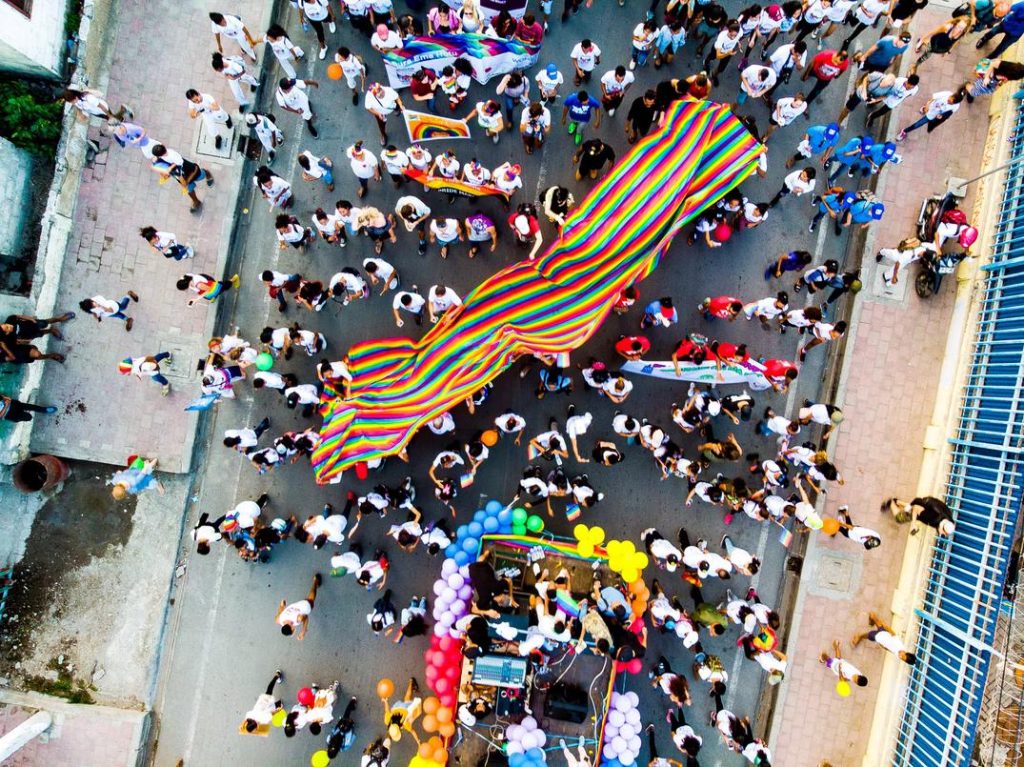
What Kind of Drones are Used by the Police?
For most police work, drones that provide high-quality live video, are both user-friendly, reliable, and safe are the most popular.
Among the drones used by police departments, the most common models include those from JOUAV, DJI, Yuneec, and Autel.
These police drones are typically equipped with dual cameras, including a high-definition camera with powerful zoom capabilities and a thermal camera that can operate in low light and low-visibility conditions.
Many drones can carry extra equipment like lights, loudspeakers, and delivery systems.
These additions help supply essential items like food, medicine, and first aid kits during emergencies, like natural disasters.
8 Best Police Drones for Sale
There are some of the most popular drones for public safety operations:
Model | Type | Transmission Range | Max Flight Time | Top Speed | Payload Capacity |
VTOL drone | 100/200km (Optional) | 480mins | 90km/h | 8kg | |
VTOL drone | 30/50km (Optional) | 180mins | 61km/h | 3kg | |
RMUS Heavy Duty Police Drone | Quadcopter | 15km | 56mins | 40 km/h | 13kg |
DJI Mavic 2 Enterprise Advanced | Quadcopter | 15km | 46mins | 76km/h | 4.5kg |
Autel Robotics EVO II | Quadcopter | 9km | 33mins | 72km/h | 2.5kg |
DJI Matrice 300 RTK | Quadcopter | 8km | 55mins | 83km/h | 2.7kg |
Parrot ANAFI USA | Quadcopter | 4km | 25mins | 61 km/h | 1.95kg |
Yuneec H520E | Hexacopter | 1.5km | 30mins | 72km/h | 0.8kg |
JOUAV CW-30E VTOL Drone
The JOUAV CW-30E VTOL Drone is a robust and versatile police drone tailored for extended surveillance and reconnaissance missions.
It stands out with its MG-120E gimbal camera, offering 30x optical zoom, infrared capabilities, and AI recognition and tracking.
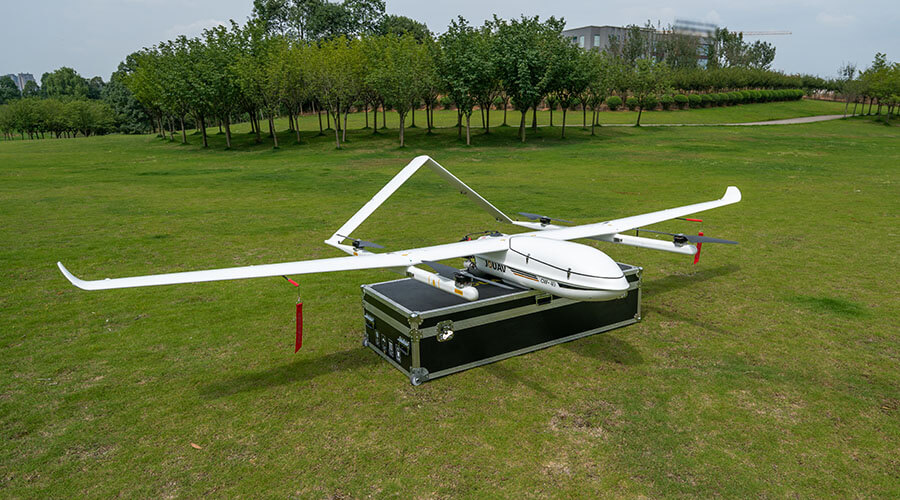
This drone supports dual real-time streaming with low latency, making it ideal for real-time surveillance and data collection.
Data security is ensured with AES-256 encryption, and its VTOL design enables vertical take-off and landing in confined spaces and on moving surfaces like ships and vehicles.
With up to 8 hours of flight time, a maximum cruising speed of 90km/h, and a 200km flight range, it excels in large-area surveillance.
The heavy lift drone can carry up to 8kg of payload, accommodating various sensors and equipment.
Advanced flight control features, including autonomous obstacle avoidance, further enhance its capabilities, while cloud-based management software provides comprehensive control and data sharing for collaborative operations.
Pros:
- Versatile MG-120E gimbal camera with 30x optical zoom.
- Dual real-time streaming with low latency.
- Strong data security with AES-256 encryption.
- VTOL design for versatile take-off and landing options.
- Extended endurance with up to 8 hours of flight time.
- High payload capacity (8kg).
- Advanced flight control and obstacle avoidance.
- Cloud-based management for comprehensive control and data sharing.
Cons:
- Premium price.
- Larger and heavier compared to some competitors.
CW-15D VTOL Drone
The CW-15D VTOL Drone represents a cutting-edge aerial asset meticulously engineered to meet the precise demands of law enforcement agencies.
Distinguished by its vertical takeoff and landing (VTOL) capabilities, this drone excels in environments characterized by spatial constraints, such as densely wooded terrains and rugged mountainous landscapes.
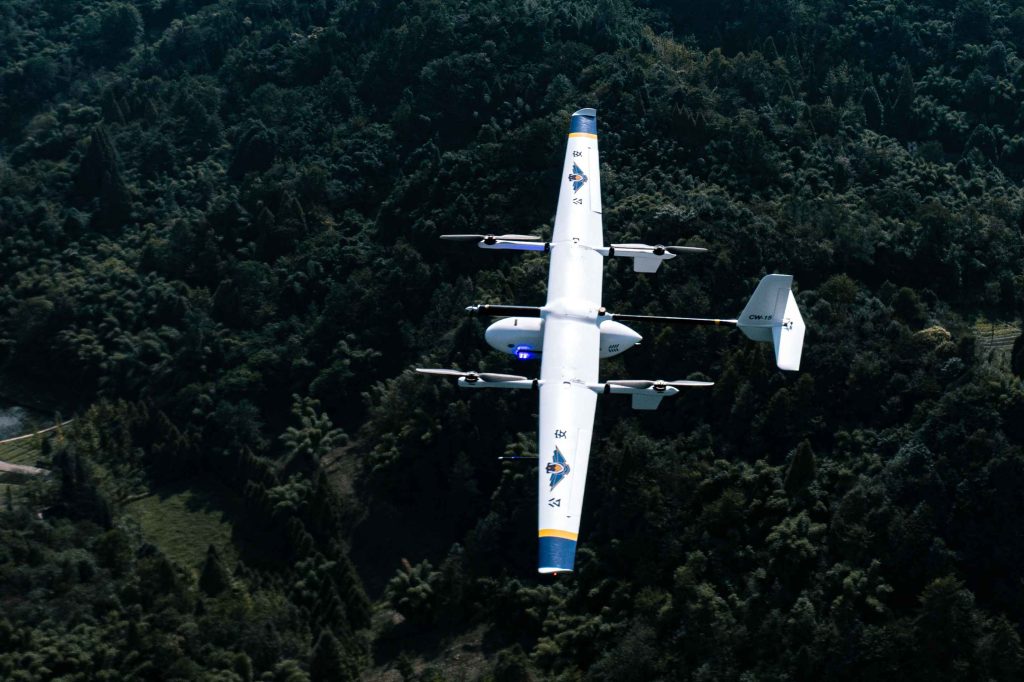
Its standout feature is the MG-120E gimbal camera, an optical marvel that seamlessly integrates a 30x zoom optical camera, a 640*512 infrared camera, and a 3-axis gimbal, further bolstered by AI recognition and tracking capabilities.
This camera system affords law enforcement a holistic, real-time visual perspective. Remarkably, the drone boasts an extended operational endurance, with a maximum flight time of up to 180 minutes, underpinned by an intelligent battery and charger system.
The open architecture and comprehensive SDK application development platform facilitate extensive customization, rendering the CW-15D adaptable to the nuanced requirements of diverse missions.
Pros:
- Advanced camera system with 30x zoom and AI recognition.
- VTOL capabilities for confined spaces.
- Extended flight time of up to 180 minutes.
- High cruising speed and an impressive flight range.
- Open architecture and SDK for mission-specific customization.
- Data encryption ensures secure communication.
- Obstacle avoidance and detection capabilities enhance safety during operations.
Cons:
- Considerable initial investment.
- Proficiency training may be requisite to harness advanced features.
- Wind resistance limitations may impact operational capabilities.
- Interaction with other drones equipped with ADS-B modules can pose challenges.
RMUS Heavy Duty Police Drone
The RMUS Heavy Duty Police Drone is a cutting-edge aerial platform designed to cater specifically to the demanding needs of law enforcement agencies.
At its core lies the DJI Matrice M30T, renowned for its exceptional capabilities.
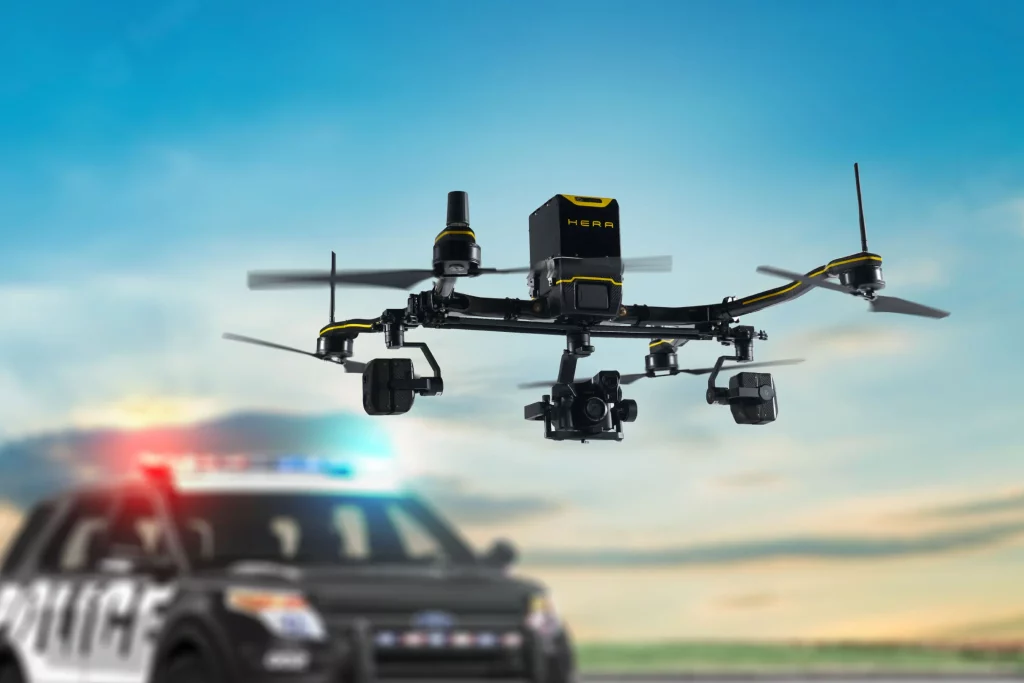
This drone stands out with an impressive flight time exceeding 40 minutes, making it ideal for prolonged missions.
Its operational range extends up to 9.3 miles (15km), ensuring comprehensive coverage.
Furthermore, it boasts a remarkable wind resistance of 33mph, making it capable of handling adverse weather conditions.
The IP55 weatherproof rating ensures reliability in various environmental scenarios.
Pros:
- Exceptional flight time of 40+ minutes.
- Impressive operating range of 9.3 miles.
- High wind resistance at 33mph.
- Enhanced safety with an omnidirectional object avoidance system.
- Advanced camera payload includes a thermal camera, RGB camera with zoom capabilities, wide-angle RGB camera, and a laser rangefinder system.
- Additional dual speaker/spotlight payload for illumination and communication.
Cons:
- The camera's low resolution can affect image quality.
- Image clarity may diminish when using zoom capabilities.
DJI Mavic 2 Enterprise Advanced
The DJI Mavic 2 Enterprise Advanced is a compact and technologically advanced police drone designed to excel in a wide range of law enforcement operations.
With a maximum speed of 45 mph (72 kph) and improved aerodynamic performance, it is built for agility and speed, allowing for rapid response in critical situations.
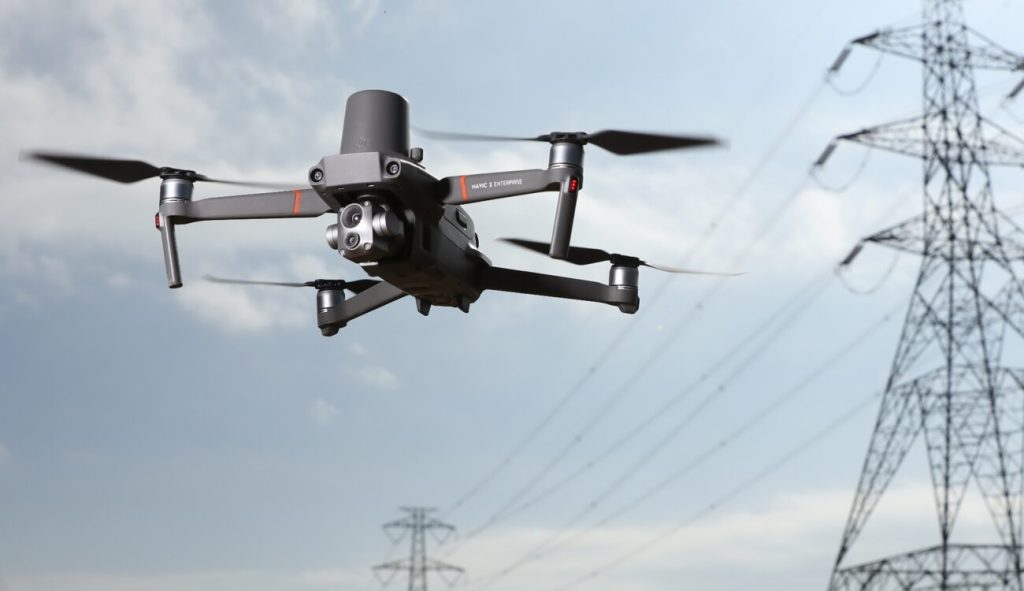
One of its standout features is the dual camera system, which includes a standard visual (zoom) camera and a FLIR thermal camera with impressive resolution and thermal zoom capabilities.
The drone's thermal sensor boasts a 30Hz refresh rate and utilizes radiometric technology, enabling precise temperature measurement during flight.
Additionally, it offers accessory mounting options, an RTK module for centimeter-level navigation accuracy, and robust data security features.
Pros:
- Compact and aerodynamic design enhances agility.
- Dual camera system with impressive thermal imaging capabilities.
- Improved thermal sensor with radiometric technology.
- Accessory mounting options for enhanced versatility in different missions.
- RTK module offers centimeter-level navigation accuracy and supports over 200 waypoints.
- OcuSync 2.0 transmission reduces latency, provides automatic frequency switching, and offers a longer range of 8 kilometers.
- Enhanced data security with 256-bit encryption and password protection.
- A comprehensive obstacle avoidance system covers all directions for added safety.
Cons:
- A short flight time of 22 to 24 minutes may necessitate frequent battery changes during operations.
- Limited video stabilization, with a maximum resolution of 1080p, may not meet the demands of high-resolution surveillance.
- The drone is not waterproof, limiting its suitability for outdoor use in rainy conditions.
Autel EVO II Dual 640T Enterprise
The Autel EVO II Dual 640T Enterprise is a high-performance police drone designed to handle demanding law enforcement tasks.
Its standout feature is the exceptional video transmission range of 15km, ensuring officers can maintain a strong connection even in challenging environments.
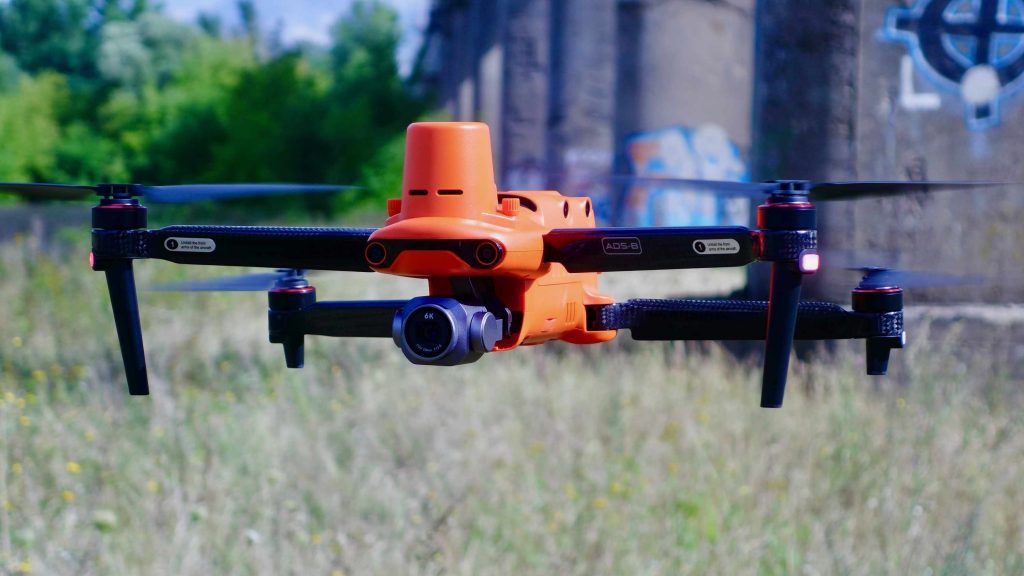
The dual cameras, including infrared thermal imaging with a resolution of 640x512 at 30fps, enable the capture of highly detailed imagery, making it ideal for search and rescue operations.
This drone also supports advanced AI features like intelligent route planning and obstacle avoidance, enhancing mission effectiveness.
The VIO positioning system ensures safe returns even in GPS-deprived or adverse weather conditions, while the RTK module provides centimeter-level accuracy.
Additionally, its compact design when folded for transport makes it highly portable.
Pros:
- Impressive 15km video transmission range.
- High-quality dual-camera system, including thermal imaging.
- Advanced AI features for route planning and obstacle avoidance.
- VIO positioning for safe returns in challenging conditions.
- Precise RTK module for centimeter-level accuracy.
- Compact and portable design.
Cons:
- Limited flight time (42 minutes).
- Payload capacity is limited to 1kg.
- Some missing features like live spot metering and LiDAR capability.
DJI Matrice 300 RTK
The DJI Matrice 300 RTK epitomizes excellence in the realm of law enforcement drones, delivering unparalleled performance and unwavering reliability.
Its exceptional attributes encompass a prodigious flight endurance of up to 55 minutes and a remarkable operational ceiling of 7,000 meters, making it supremely suited for real-time monitoring and expansive surveillance tasks.

Distinguished by a robust and weather-resistant design featuring an IP54 rating, this drone remains undaunted even in the face of adversarial climatic conditions.
Equipped with a night-vision FPV camera, it excels in nocturnal operations, substantially augmenting operational safety and efficacy.
The Matrice 300 RTK is replete with advanced mapping features, including Terrain Follow and Smart Oblique, streamlining data collection for investigative and strategic missions.
Moreover, its arsenal of safety measures, including 6-directional sensing and positioning and an arm lock indicator, fortifies its reputation as a reliable companion for law enforcement missions.
Pros:
- Hexacopter configuration guarantees stability and reliability.
- Versatile camera options, including thermal imaging.
- Collision avoidance through Sonar Sensor.
- Pinpoint flight accuracy is enabled by multiple navigation systems.
- A quick payload swap mechanism enhances operational efficiency.
- Ideally suited for firefighting and data-intensive missions.
Cons:
- Limited transmission range, extending to only 1.5km.
- Relatively short flight duration of 30 minutes, with each battery providing 25 minutes of flight time.
- Slightly reduced coverage efficiency compared to certain competitors.
- The absence of autonomous flight modes may necessitate greater manual control during missions.
Parrot ANAFI USA
The Parrot ANAFI USA is a compact and highly portable drone designed to meet the diverse needs of law enforcement agencies.
Its foldable and lightweight construction allows for rapid deployment in various scenarios.
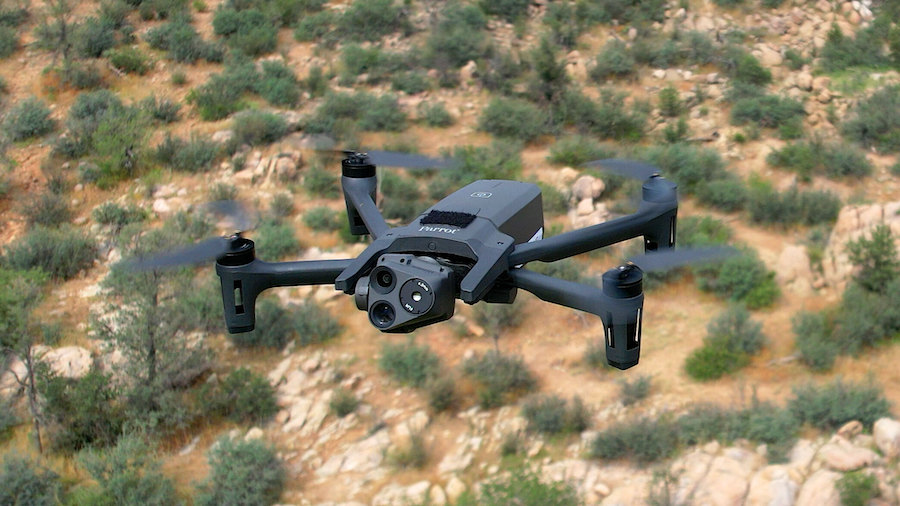
One of its standout features is its GPS capability, ensuring precise navigation, even in GPS-denied environments.
Furthermore, it boasts an impressive IP53 rating, making it dust and rain-resistant, allowing it to operate effectively in challenging conditions.
The drone is equipped with downward sensors, ensuring stable hovering for precise control during operations.
Pros:
- Compact and lightweight design for exceptional portability.
- Reliable GPS and indoor operation capabilities.
- Stable hovering supported by downward sensors.
- Dust and rain-resistant with an IP53 rating.
- Ease of use, including the ability to launch from the palm of your hand.
- Unique features such as HDR video and Hyperlapse mode.
- Flexible video recording options, including 4K UHD.
Cons:
- Relatively short flight time of 25 minutes, which may require frequent battery changes during extended missions.
- Limited zoom capability may be insufficient for certain surveillance scenarios.
- The lack of obstacle detection systems necessitates careful piloting.
- The inability to check the battery level when plugged in may lead to operational challenges.
- The build quality, which uses lightweight plastic and carbon fiber, may feel somewhat flimsy.
- Slow battery charging can be a drawback during rapid deployments.
- A short control range of 4km may limit usability in certain situations.
Yuneec H520E
The Yuneec H520E is a versatile and dependable police drone designed to meet the demanding requirements of law enforcement agencies.
Its six-rotor hexacopter design provides stability and agility, making it well-suited for various surveillance and reconnaissance missions.
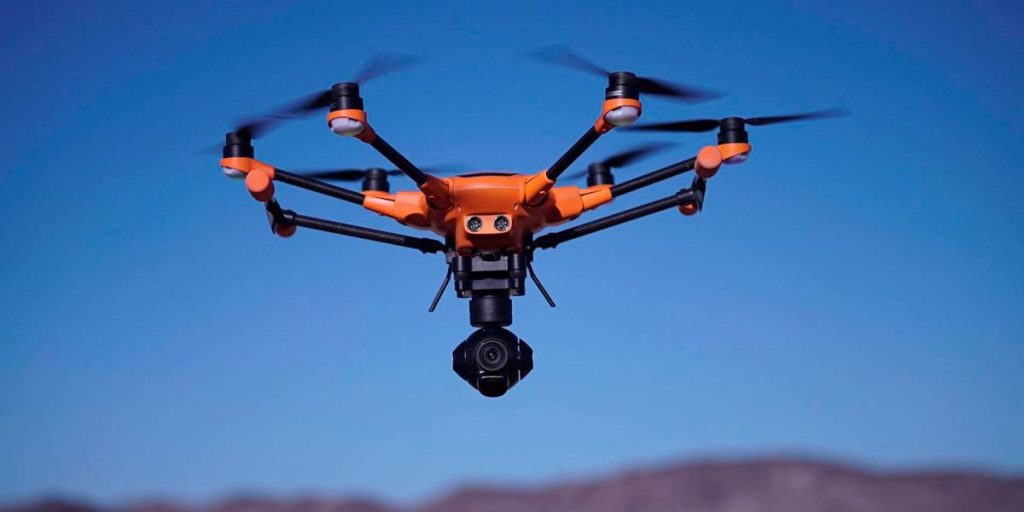
The drone comes equipped with the E50 camera, featuring a 1-inch CMOS sensor and a 40mm equivalent lens, ensuring high-quality 4K video capture at 30fps.
What sets the H520E apart is its interchangeable gimbal system, allowing for quick switching between different gimbal options, making it adaptable for diverse scenarios.
Furthermore, the inclusion of a Sonar Sensor for Collision Avoidance enhances safety during flights, and it supports multiple navigation systems, including GPS, GLONASS, and Galileo, ensuring precise and worry-free flying experiences.
Pros:
- Six-rotor hexacopter for stability and maneuverability.
- Impressive 4K video capture with the E50 camera.
- Interchangeable gimbal system for versatility.
- Sonar Sensor for Collision Avoidance.
- Multiple navigation systems for pinpoint flight accuracy.
- Quick payload release mechanism for efficiency.
Cons:
- Limited transmission range (1.5km).
- Relatively short flight time (30 minutes).
- Lower coverage efficiency.
- No autonomous flight modes.
What Kind of Payloads are Used for Incident Response Drones?
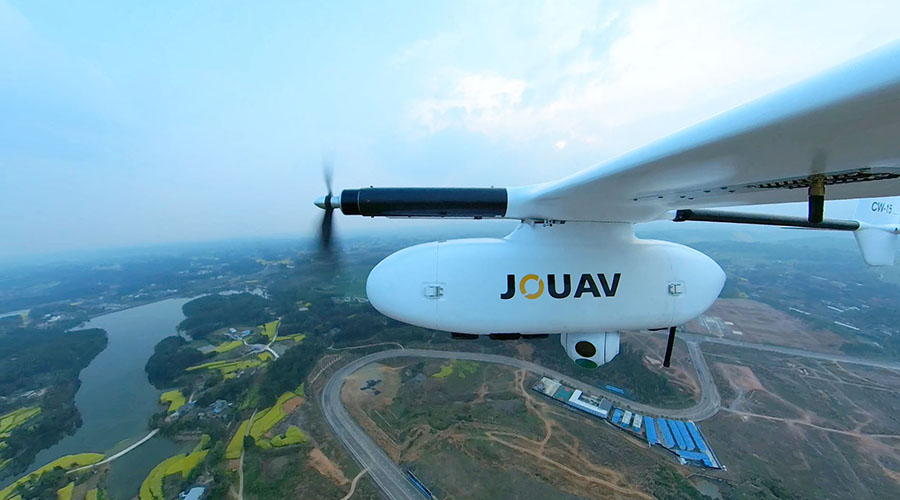
- Thermal imaging cameras - These cameras are used to detect heat signatures, allowing officers to locate suspects or people hiding under vegetation in low-light environments. The payload is used by law enforcement to manage surveillance activities, locate and apprehend suspects, investigate crime scenes and conduct search and rescue operations.
- Optical/visual cameras - These cameras are used to monitor video of a specific area and transmit it to law enforcement in real time. They usually have a powerful zoom feature that allows you to view very small objects from a distance. Record video of a specific area, as well as view the environment in real time.
- LiDAR - They can be used to build an environmental map of an area by measuring the distance between objects using high-speed laser pulses. A LiDAR drone can be useful for planning rescue search and rescue operations.
- Spotlights - These payloads allow law enforcement to illuminate large areas at night
- Loudspeakers - One-way or two-way communications via loudspeakers allow law enforcement to coordinate operations and communicate with suspects.
FAQ
What are police drones?
As the name implies, police drones are drones that are owned and operated by various law enforcement agencies. These machines have multi-intelligence capabilities that can navigate and sense in multiple directions at any given time.
Fitted with the latest high-definition cameras and thermal imaging technology, law enforcement drones are designed to serve a much different purpose than commercial drones, primarily to help cops find suspects and traffic violations more efficiently and safely.
What do police drones look like?
Police drones are not unique in the drone world, as they look the same as any drone in most cases. However, police drones are able to fly in neighborhoods and restricted airspace in a way that commercial drones cannot.
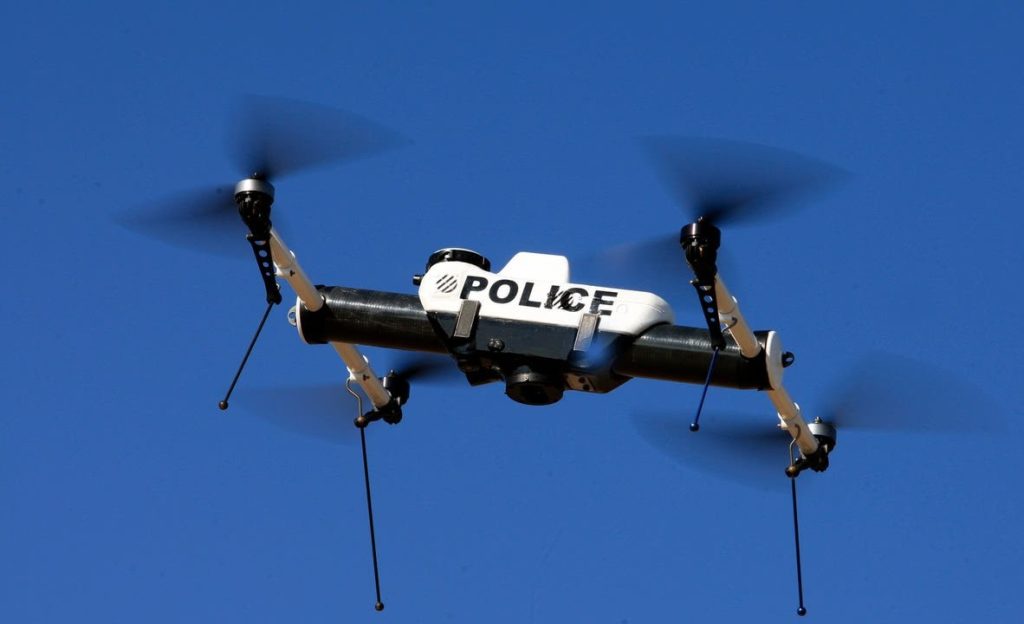
Source from cbjlawyers.com
Can law enforcement agencies use drones?
Yes, you can if you follow the drone laws set by the Federal Aviation Administration (FAA) or any regulatory agency with jurisdiction over your area. In a study conducted by the Bard Institute, more than 300 state and local law enforcement officials were found to already be using drones in some way.
How much is a police drone?
The cost of a police drone can vary widely depending on the model, features, and accessories. Generally, a basic police drone can cost anywhere from $500 to $50,000 USD. It's important to note that the cost of a police drone may also include additional expenses such as training, maintenance, and insurance.
- Read more: How much does a drone cost? Here's a price breakdown
How big are police drones?
Police drones come in different sizes depending on their intended use. The smallest police drones can fit in the palm of your hand and weigh less than 250 grams, while larger ones can have wingspans of up to 2 meters (6.5 feet) or more and weigh over 25 kilograms (55 pounds). The size of a police drone depends on its payload capacity, flight time, and other specifications required for its specific policing tasks.
How high do police drones fly?
The maximum altitude and drone altitude limits of police drones are influenced by their size and capabilities. Their rated operating altitude can range from 1,200 feet above the ground to a flight level of more than 22,000 feet, and their service ceiling can range from 50 to 60,000 feet. However, according to the FAA, the maximum allowable flight altitude for commercial high-altitude drones is 400 feet above the ground.
How fast can police drones fly?
Depends on the make and model of the drone. Most commercial drones can reach 60km/h with ease, with the latest JOUAV CW-30E VTOL drone doing around 90km/h. According to the FAA Rules and Regulations, if you have no special waiver, you can only fly during daylight hours, no faster than 160 miles per hour.
How long can police drones fly?
A typical police drone can stay in the air for 10 to 30 minutes, while high-end police drones can fly for even an hour or more. However, police drone hours depend on the types of drones (A fixed-wing drone provides a flight time greater than that of a multirotor), flight weight, battery capacity, battery operating temperature (when the battery temperature exceeds 20 degrees, the battery will consume more energy), and weather conditions (strong winds will shorten the battery capacity).
How far can a police drone fly?
The flight range of a police drone can vary depending on its design, battery life, and other factors. In general, most police drones can fly up to several kilometers (typically between 3-7 kilometers or 2-4 miles) from the operator, although some high-end models can have a drone range of up to 15 kilometers (9 miles) or more.
How far can police drones see?
Under ideal conditions, a typical police drone can see 4,000 meters or more during the day, but at night it can only see people 50m away. If you go beyond that distance, you can only see a blurry figure. But if the police drone is equipped with a camera with night vision capabilities, it can see farther and more clearly.
- Read more: Most comprehensive guide to night vision drone
Can police drones see through walls?
No, drones for law enforcement cannot see through walls with standard cameras because the light in the room does not penetrate the walls.
Do police forces need special permission to fly drones?
Yes, in most countries, police forces need special permission to fly drones. They need to follow regulations and obtain the necessary certifications from the relevant aviation authorities. For instance, in the United States, police departments must comply with the Federal Aviation Administration's (FAA) regulations for flying drones, including obtaining a remote pilot certificate and following specific flight rules.
Other countries may have their own aviation authorities and regulations that police forces need to adhere to when operating drones. Additionally, police departments may also need to obtain permission from local authorities before flying drones in certain areas.
Can police use a drone without a warrant?
In most countries, the use of drones by police without a warrant is subject to legal restrictions and limitations. Police may only use drones for specific purposes, such as search and rescue missions, traffic management, or in emergency situations, and they must follow legal and ethical guidelines when doing so.
In some cases, police may be able to fly a drone without a warrant, such as in public areas where there is no expectation of privacy, but they still need to adhere to the applicable laws and regulations.
Do police drones have infrared?
Yes, many professional drones can be equipped with infrared sensors that can help detect heat sources, including the human body and animals.
Do police drones have weapons?
The use of weapons on drones by police is generally not allowed due to legal and safety reasons. In addition, many countries have strict laws and regulations regarding the use of force by law enforcement, and the use of weaponized drones could be in violation of these laws.
However, some countries, such as China and Russia, have reportedly developed military-grade drones that can be equipped with weapons, but these drones are not typically used for civilian law enforcement purposes.
What does a police drone look like at night?
When flying at night, police drones may have lights attached to them to make them more visible to the operator and others in the area. These lights may be white, red, or green, and may be used to help the operator navigate the drone and identify objects in the dark.
What does a police drone sound like?
When it comes to police drones, the noise levels can vary. The smaller ones with electric motors make a buzzing or whirring sound that's pretty quiet, hard to hear from a distance. But those bigger ones with gasoline engines or fancy propulsion systems can be louder, like mini airplanes or helicopters.
But there are quiet drones out there! Yep, some manufacturers are working on creating drones that hardly make a peep. These innovative machines are designed to minimize noise, especially in urban areas or during sensitive operations. They fly with grace and efficiency while keeping the decibels down.
How do you spot a police drone at night?
If you want to spot a drone at night, you can look for its lights, follow its sound, or detect its radio frequencies. You can also send your own signal to the space where you suspect the drone is located, and use a device to analyze the signal that bounces back to confirm the drone's presence.





